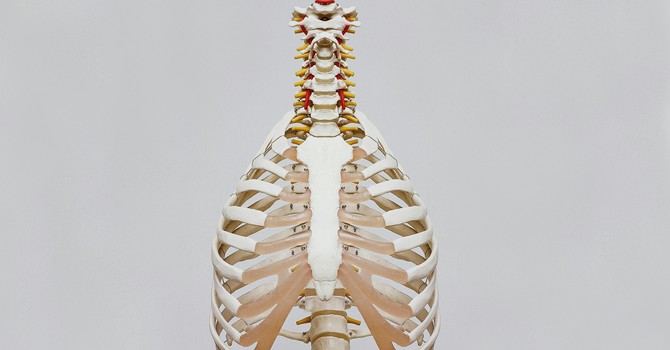“Pelvic Floor” has become quite the buzzword. Certainly an improvement from yesteryear when this part of our body was not to be spoken about and consequently, difficult to find care for. We are living in an era that is pelvic floor-aware. There are resources available and it's more than okay to ask for help.
While I'm ecstatic that "pelvic floor" is enjoying some limelight, I do believe that we need to give the pelvis some well-deserved attention. The pelvic floor is quite literally, the soft-tissue floor of the pelvis. In my mind, the pelvis is the home of the pelvic floor and this influences how I assess and treat pelvic health issues.
The pelvis is like a bowl. In the image below, the pelvic bones that form the framework of this bowl are coloured green. You can see that the bones of the pelvis attach to the spine and the femurs (thigh bones). The bowl contains important structures like the bladder and urethra, vagina, prostate, and rectum.

Without the pelvic floor, this bowl would have no bottom. The pelvic floor muscles support the function of our pelvic organs. One major role of the pelvic floor, given that it is the bottom of the bowl, is to help contain our pelvic organs and ensure they stay up where they should be.
In the image below, the pelvic floor's location is green. Please note that in this view, there are no organs, no muscles and no skin. We are looking at a skeleton from the front, then looking down into its pelvic bowl.

And finally, I created this chart one day while my daughter was napping and my mind needed some stimulation. I wanted to count all the muscles attaching to the pelvis, and specifically, I wanted to know how many of them were pelvic floor muscles.

What I hope to illustrate here is that although the pelvic floor is important, it only consitutes about 1/4 of all the muscles attaching to the pelvis. Furthermore, the pelvic floor muscles live only in the pelvis. They do not extend out of the pelvis to other regions of the body. Other pelvis muscles can be far-reaching. They travel to the hips, knees, trunk, and even the shoulders. They affect and can be affected by the function of other body parts. This is one reason why the pelvic floor should be approached as a part of whole-body function.





